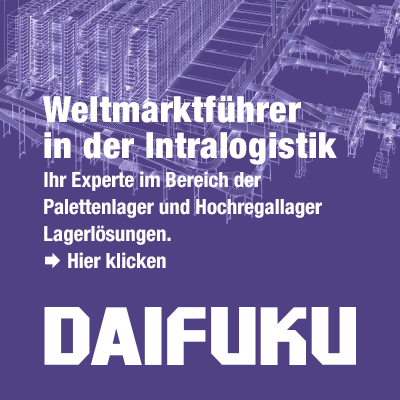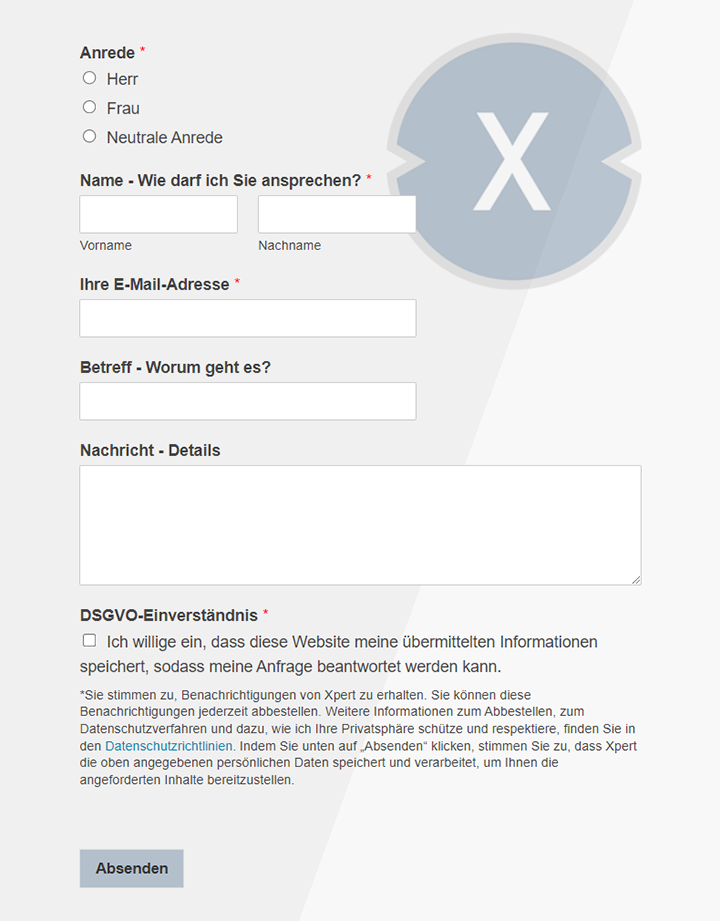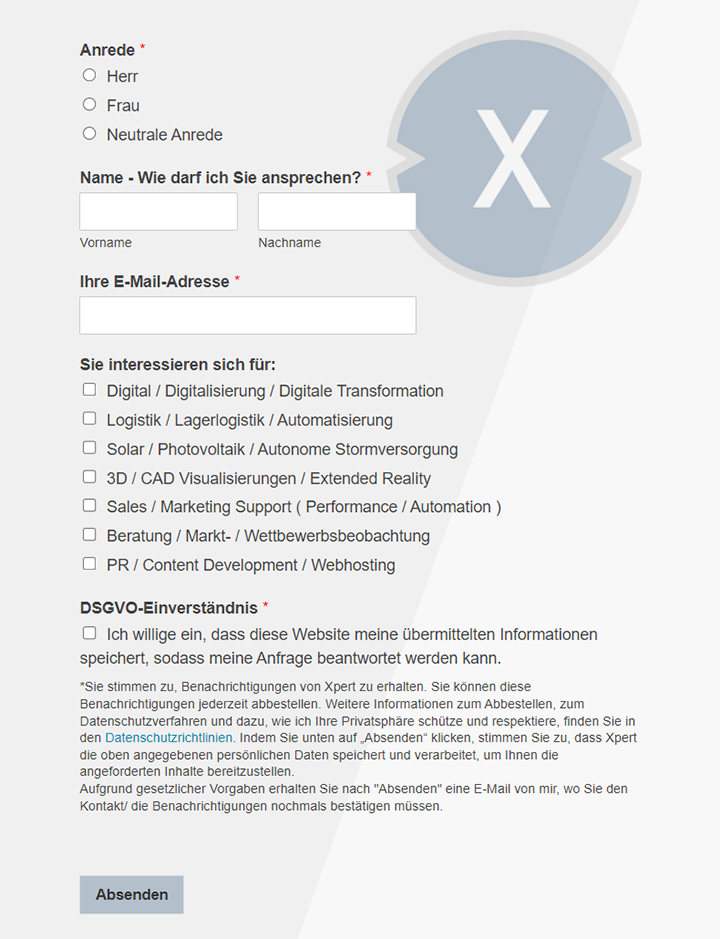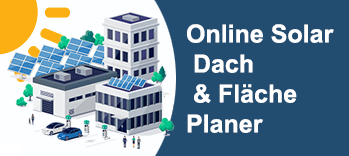Future of maintenance logistics: Synergies between telemaintenance (remote maintenance) and GS1 Datamatrix
Xpert pre-release
Language selection 📢
Published on: April 22, 2025 / update from: April 29, 2025 - Author: Konrad Wolfenstein

Future of maintenance logistics: Synergies between telemaintenance (remote maintenance) and GS1 Datamatrix - Image: Xpert.digital
Digital transformation in logistics: efficiency through modern maintenance strategies
Minimize downtimes: The perfect maintenance technology for industry
Modern maintenance logistics are faced with fundamental changes due to the digital transformation. In particular, the combination of telemaint dance (remote maintenance) and the standardized GS1 Datamatrix creates new opportunities to make maintenance processes more efficient, faster and more flexible. These technologies ideally complement each other: While telemaintance bridges the spatial distance between experts and maintenance objects, the GS1 Datamatrix ensures precise, machine -readable identification of components and links physical objects with its digital data. Together they form a powerful combination that not only minimizes downtime and lowers costs, but also lies the foundation for forward -looking maintenance concepts and the intelligent maintenance of the future.
Suitable for:
- Safety-relevant components in mechanical engineering: Schaeffler rolling bearings with digital twin and GS1 DataMatix for optimized maintenance and reliability
Current challenges in maintenance logistics
The growing pressure on digitization and increase in efficiency
The completing industry is under enormous pressure worldwide to increase its efficiency and secure competitive advantages. New business models in which products are no longer sold, but their performance are sold, fundamentally change the market. At the same time, increasingly complex machines and systems have to be maintained in geographically distributed, sometimes difficult to access environments. Traditional maintenance methods reach their limits here: they are often reactive or are based on rigid maintenance intervals, which can lead to unnecessary costs or unexpected failures.
The limits of traditional maintenance
So far, two types of maintenance have dominated: the corrective maintenance that only begins after damage occurs and the preventive maintenance with fixed maintenance intervals. Both approaches have significant disadvantages. In the case of corrective maintenance, there are unplanned standards, while functional components are often replaced in preventive maintenance. These inefficiencies lead to higher costs and lower system availability - a critical factor, especially in highly complex environments such as defense logistics.
The change to intelligent maintenance
The answer to these challenges lies in the development of intelligent maintenance systems. "Only if maintenance also develops into a smart maintenance can the future vision of the Smart Factory reality". However, this requires more than just the digitization of individual processes - it is about a holistic transformation that includes technology use, efficient processes and the integration of humans.
Telemaintenance: basics and functional principles
Definition and areas of application
Telemaintenance, also referred to as remote maintenance, enables the implementation of maintenance tasks from a distance using telecommunications and digital technologies. Basically, it is a communication tool that enables the exchange of information, visual data and error search techniques between experts and technicians on site. The possible uses range from simple telephone consultations to complex, data-intensive remote diagnoses with real-time system data and video transmissions.
Technological requirements
Various technological components are required for a successful implementation of telemaintenance:
- High-speed telecommunications networks for the real-time transmission of data, language and video
- Safe data transfer protocols for the protection of sensitive technical information
- Video conference systems for visual inspection and direct communication
- Remote diagnostic tools for analyzing system parameters and error codes
- Digital maintenance tools for local staff and the remote experts
The integration of these systems into existing maintenance information systems is crucial for efficient documentation and process control.
Strategic importance for defense logistics
In modern defense logistics, Telemainttenance has established itself as a “Combat Multiplier”, which improves support for inherently used units and increases operational readiness. The ability to wait and repair equipment quickly and reliably, often under difficult conditions, represents a strategic advantage.
GS1 Datamatrix: A powerful standard for identification
Technical foundations of the GS1 Datamatrix
The GS1 Datamatrix is a two -dimensional barcode with high data capacity and fault tolerance. It belongs to the Automatic Identification Technology family (AIT) and enables the quick and error -free recording of data about objects in the logistical process. Its robustness, compactness and high data density have led to its adaptation in demanding sectors such as defense, aerospace and space travel.
Advantages over conventional identification methods
The GS1 Datamatrix offers significant advantages over traditional identification methods:
- Automated, fast and clear detection by the GS1 standard
- High accuracy through integrated error correction and avoiding manual inputs
- Large data depth with the possibility of storing extensive information in one code
- Immediate data access to relevant information
These properties make the GS1 Datamatrix an ideal tool for modern maintenance logistics, where precision and speed are decisive.
Application in mechanical engineering and in the defense industry
With the GS1 standards, machines, components and tools can be clearly identified and associated information such as the manufacturing date and batch number can be exchanged. This enables the pursuit of the entire product life cycle from the production to the supply chain and operation to disassembly and utilization. In the defense area, the GS1 Datamatrix has already established itself as a reliable method for the clear identification of complex weapons systems and its components.
Suitable for:
- Efficient maintenance logistics in the military with GS1 Datamatrix and Telemainttenance - Logistics Modernization of Maintenance
Synergy effects between Telemainttenance and GS1 Datamatrix
Integration of the GS1 Datamatrix in Telemainttenance processes
The integration of the GS1 Datamatrix in Telemainttenance processes follows a structured process:
- Identification: A technician scans the GS1 Datamatrix code on a defective component with a suitable scanner.
- Data transmission: The structured data read from the code is transferred to the central telemaintness platform via a secure network.
- Information call: The system uses the unique identifier to automatically access all relevant information from connected databases.
- Remote diagnosis: The remote expert is clearly shown the information collected and can analyze the cause of the error by live video transmission.
- Guided action: The expert leads the technician on site through the necessary testing and repair measures.
- Documentation: All actions carried out are documented in the central maintenance system.
This process integration makes the GS1 Datamatrix an active key that triggers an automated and extensive flow of information and thus significantly increases the efficiency of telemaint dance.
Improvement and acceleration of maintenance processes
The combination of Telemainttenance and GS1 Datamatrix leads to significant improvements in maintenance logistics:
- Improved data quality through clear identification and structured information transmission
- Accelerated diagnosis and repair processes through immediate access to relevant technical data
- Increased operational flexibility by decoupling from expert location and maintenance
- Reduced cognitive burden for technicians and experts through standardization and automation
With the use of the GS1 Datamatrix, MBDA Germany, for example, has created an innovative telemaintenance service that is used for the maintenance and maintenance of complex systems worldwide.
Success example: MBDA Germany
MBDA Germany delivers a concrete example of success for synergy between Telemainttenance and GS1 Datamatrix. The company uses the GS1 Datamatrix to serialize assemblies in machine -readable form and already marks components during production. In the event of a maintenance, this enables exact identification by reading the data carrier via scanner.
The success of this integration is shown in several aspects:
- Targeted access to maintenance history or construction plans of the individual part
- Experts can support from Germany - without having to look at the facility or the component on site
- The innovative solution is also suitable for use in other maintenance -intensive areas
Xpert partner in warehouse planning and construction
New business models through smart maintenance: How data change the service
On the way to the predictive maintenance
From the reactive to forward -looking maintenance
The evolution of maintenance leads from reactive and preventive approaches to predictive maintenance (forward -looking maintenance). This advanced method is based on the evaluation of process and machine data in real time. The analysis of this data makes forecasts that form the basis for maintenance -appropriate maintenance and consequently reduce downtimes.
Technological enabler for predictive maintenance
Predictive maintenance is made possible by various technologies:
- Data analysis, artificial intelligence and the Internet of Things (IoT) to predict maintenance needs
- Sensors and monitoring systems for recording machine data in real time
- Advanced algorithms and AI models for recognizing patterns and deviations from normal operating behavior
- High-speed data processing for real-time analysis of large amounts of data
The combination of GS1 Datamatrix and Telematenance forms a solid basis for the implementation of predictive maintenance, since it enables the clear identification of components and access to their history and state data.
Economic advantages and increase in efficiency
The implementation of predictive maintenance in combination with Telemainttenance and GS1 Datamatrix offers significant economic advantages:
- Cost reduction through targeted planning of maintenance work only if they are really necessary
- Minimization of downtimes through proactive prevention of disorders
- Maximizing productivity and operating times of the systems
- Optimization of resource use through precise planning of personnel, material and tools
These advantages make Predictive maintenance a central element of Industry 4.0 and an important competitive factor for companies in various industries.
Suitable for:
- Supply chain optimization and predictive maintenance in the manufacturing sector: AI is changing the industry
Smart maintenance: the holistic transformation of maintenance
Definition and concept of smart maintenance
Smart maintenance goes beyond individual technological solutions and describes a holistic transformation of maintenance. It includes the use of technology, efficient processes and the integration of humans. Due to the digitization and the resulting networking of process management and plant operations, the maintenance engineer becomes the backbone of the factory 4.0.
Role of maintenance in the smart factory
The role of maintenance in modern production environments changes fundamentally:
"The maintenance of the future ensures the highest production efficiency, reduces TCO, guarantees optimal availability and flexibility - and thus increase profit."
In this context, maintenance becomes a value creation factor from a pure cost factor, which contributes significantly to the efficiency and productivity of the entire company. The integration of Telemainttenance and GS1 Datamatrix supports this transformation by creating the basis for data -based decisions and automated processes.
Implementation challenges
The implementation of smart maintenance and the underlying technologies is associated with various challenges:
- Data security and protection of sensitive technical information, especially in defense logistics
- Interoperability between different systems and standards
- A shortage of skilled workers and increasing complexity of the processes
- Investment costs for new technologies and integration into existing systems
Coping with these challenges requires a strategic approach and the cooperation of various specialist disciplines, from IT to plant management.
Suitable for:
- GS1 Datamatrix: Logistics turbo for the military-less downtime thanks to optimized maintenance logistics
Future prospects and trends
Further development of telemainttenance technologies
The telemaintenance technologies are continuously developing. Future trends:
- Integration of augmented reality (AR) for the visual support of the technicians on site
- Use of remote -controlled robots for inspections or manipulations in dangerous areas
- Further development of communication technologies for even more reliable and secure data transmission
- Improved human-machine interfaces for more intuitive interaction between technicians and systems
These developments will further increase the efficiency and possible uses of telemaintenance and open up new operational scenarios.
Further development of the GS1 standards for maintenance
The GS1 standards are also continuously developed in order to meet the requirements of modern maintenance logistics:
- Increased data density and improved fault tolerance for missions under difficult conditions
- Extended options for integrating sensor data and IoT connection
- Standardized interfaces for seamless integration into different maintenance systems
- Increased security functions to protect against unauthorized access and manipulation
These further developments strengthen the position of the GS1 Datamatrix as a key technology for the digital transformation of maintenance logistics.
New business models through digital maintenance
The digitization of maintenance opens up opportunities for innovative business models:
- Service offers in which products are no longer sold, but their performance is sold
- Data -based services to optimize system efficiency and availability
- Remote support services with guaranteed reaction times and predefined service levels
- Pay-per-us models for maintenance services based on actual use and wear
These new business models change the relationships between manufacturers, operators and service providers and create new value chains in maintenance logistics.
From the reaction to prevention: the way to smart maintenance
The combination of telemaintenance and GS1 Datamatrix represents significant progress in the evolution of maintenance logistics. The synergy of these technologies makes maintenance processes more efficient, faster and more flexible, which leads to higher system availability, lower costs and improved resource use. The full potential of this combination is particularly evident in areas with complex systems and difficult to access, such as defense logistics or mechanical engineering.
The integration of Telemainttenance and GS1 Datamatrix also forms the basis for more advanced concepts such as predictive maintenance and smart maintenance based on data analysis, artificial intelligence and networked systems. This development marks the transition from a reactive to a proactive, data -based maintenance that not only prevents failures, but also optimizes the lifespan of systems.
For companies and organizations, this means a fundamental transformation of their maintenance strategies and processes. The implementation of these technologies requires investments in infrastructure, expertise and organizational changes, but promises significant economic advantages and competitive advantages in the long term.
The future of maintenance logistics lies in the complete integration of digital technologies and the development of intelligent, self -learning systems that not only react, but also anticipate and optimize. With the combination of Telemainttenance and GS1 Datamatrix, an important step in this direction is already taken.

Xpert.Plus warehouse optimization - high-bay warehouses such as pallet warehouses consulting and planning
Advice - planning - implementation
I would be happy to serve as your personal advisor.
Head of Business Development
Chairman SME Connect Defense Working Group
We are there for you - advice - planning - implementation - project management
☑️ SME support in strategy, consulting, planning and implementation
☑️ Creation or realignment of the digital strategy and digitalization
☑️ Expansion and optimization of international sales processes
☑️ Global & Digital B2B trading platforms
☑️ Pioneer Business Development
I would be happy to serve as your personal advisor.
You can contact me by filling out the contact form below or simply call me on +49 89 89 674 804 (Munich) .
I'm looking forward to our joint project.
Xpert.Digital - Konrad Wolfenstein
Xpert.Digital is a hub for industry with a focus on digitalization, mechanical engineering, logistics/intralogistics and photovoltaics.
With our 360° business development solution, we support well-known companies from new business to after sales.
Market intelligence, smarketing, marketing automation, content development, PR, mail campaigns, personalized social media and lead nurturing are part of our digital tools.
You can find out more at: www.xpert.digital - www.xpert.solar - www.xpert.plus































